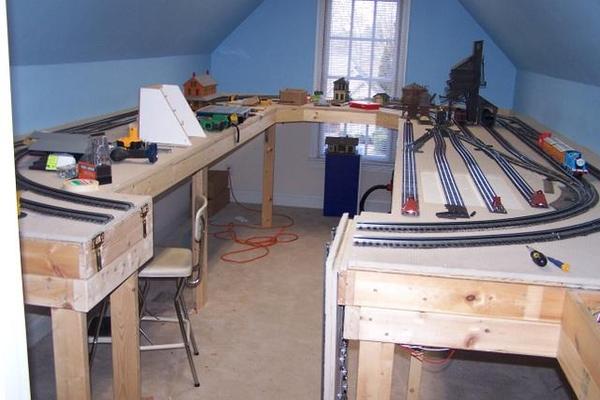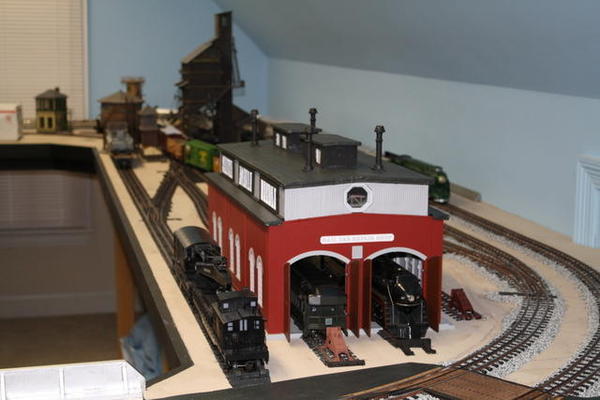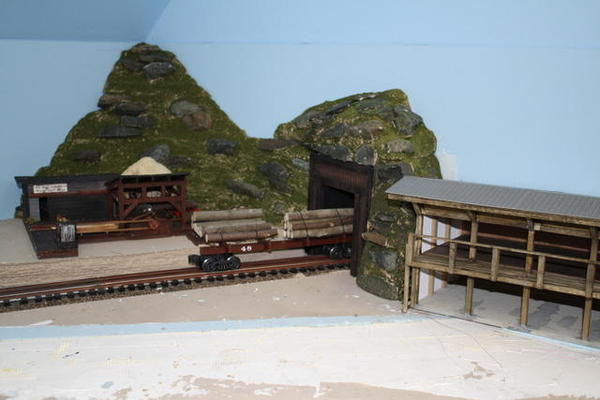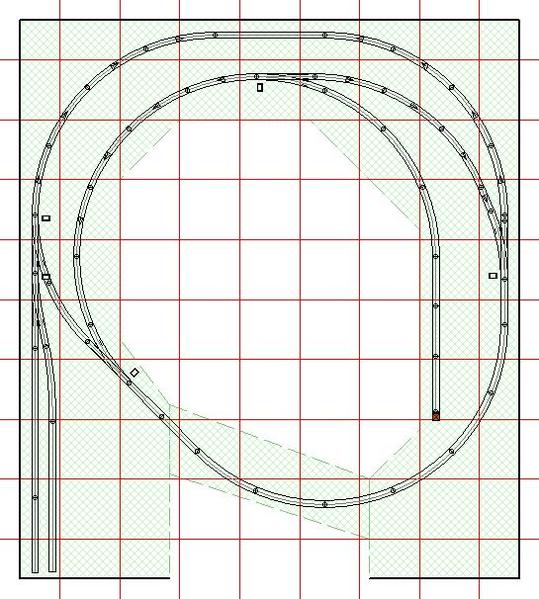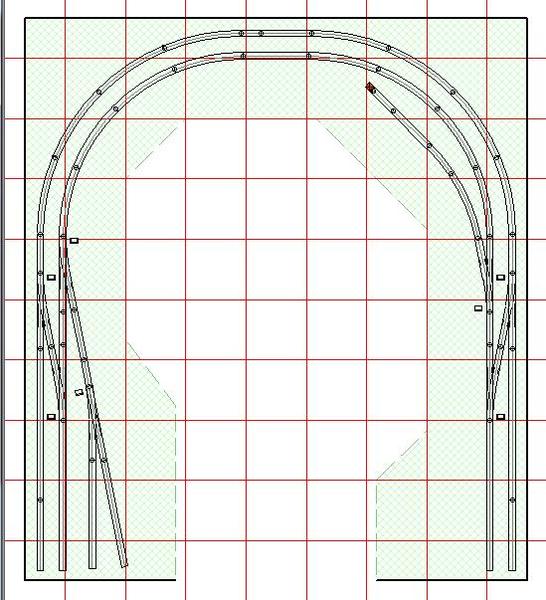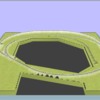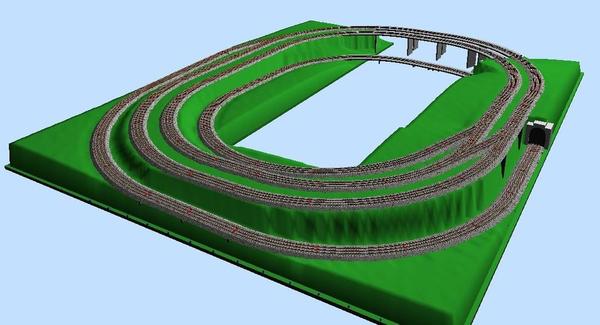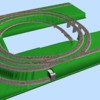Like Matt I am no fan of Island layouts although I dismantled a 12 year old 15x23 Island operation in October 2009 that I enjoyed, it had several access pop ups and a Drop Section entry to a central Yard and Wye. With advancing age and health issues it had become a chore to access,run and maintain.
Anyway the Domestic CEO was running me out of the layout space [upstairs in our Condo]in favor of her TV and Excercise Room. I had recently also dismantled a 5-track, 14x32, twin shelf operation at our mountain cottage when we moved back to the City for more specialized Med facilities.
Moving down the hall to a 9x19 attic room over the Condo Garage I built a round-the-wall 9x16 layout and following my "Druthers" it has double track mains with wide 072/084 and 084/096 end-curve arcs, a Service Yard on one side and hopefully [sometime] a Village on the other. Originally the two far corners were left open as access triangles because of long reach but now are build-sites of a Denim Mill and and a Sawmill/Lumber Yard[unreachable now except from a temp raised work platform]. My track is all recycled Gargraves Flex with Ross, Tortoise operated, turnouts.
A year ago I scratch-built a Lumber Shed but bascially hand tremors have limited my fabrication work and I am increasingly relying on folks such as Joe Fauty of Model Structures, Harry Heike's great work and structures such as the Ash and Cinder Lift Tower and a Curved Depot from David Duhmel.
I enter the layout interior via a long ago Jim Barrett designed Drop Section that I recycled and rebuilt as a fake plate girder bridge. "Ducking Under" in my '80s is not now as efortless as in the past . The Service Yard with its Enginehouse and 6 Towers is 40" wide and the Village side is 36". I can reach them.
. The Service Yard with its Enginehouse and 6 Towers is 40" wide and the Village side is 36". I can reach them.
In the same sense that Matt noted I hope to use structures, fronts, etc, and landscaping to distract from the "track loop effect" plus running shorter trains and comparatively slow. I can now only turn trains via my 0-5-0 "switcher"and it is not feasible to build an elevated second level due to the roof pitch begining at 54" high[layout @ 42"h.].
The layout work has been on hold for quite awhile now due to some health problems but will soon resume as I complete rail side rust painting and ballasting a short section on the Village side.
Photos provide a glimpse of the initial raw benchwork, Service Yard side and the far corners.
